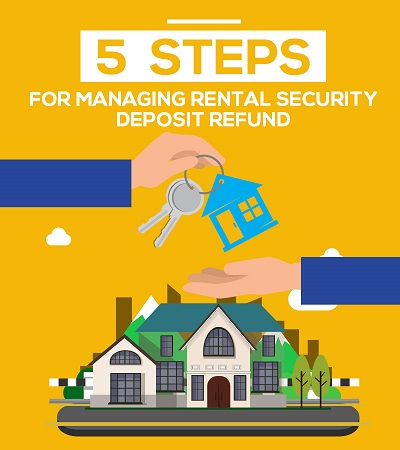
Most tenants moving out of a rental want to get their security deposit back. However, some landlords are hesitant to return it, or in some cases, wrongfully withhold money from the deposit. Here are what landlords need to know when managing rental security deposit refunds.
1. Make sure that deductions are appropriate
Most states allow landlords to use the rental security deposit to cover unpaid rent and damage to the property beyond normal wear and tear. That is the case in Connecticut. However, in some states like Indiana, a landlord can recover unpaid utility bills. In other states, eligible deductions are not governed by statute, but by the terms in the original lease agreement.
2. Document all damages
Not all states require a walk-through inspection before landlords can claim the security deposit. That being said, it is usually best practice to conduct one. If the tenant has not moved out yet, make arrangements so that they are present during the inspection. This will go a long way in minimizing disputes. Take photos of all the damages. Ideally, you should have before and after pictures of the unit to show to the tenant in case of a dispute. Additionally, keep a record of unpaid rent, utility bills, and other expenses, so you have that proof as well.
3. Prepare an itemized list of all deductions
The list must be in writing and show how the security deposit will be applied towards back rent, repairs, cleaning, or other financial obligations required under the lease agreement. List the item (e.g., five days’ unpaid rent) and the amount of the deduction. Attach invoices and receipts for all repairs, or alternatively, include a reasonable estimate for those repairs.
4. Know the law
Most states have strict guidelines as to how and when to return security deposits. Laws for different states can be different. Thus, it’s important to know your state’s rules.
When to return the deposit:
Most states set a deadline, usually 2 to 3 weeks after the tenant has moved out, for the landlord to give the following to the tenant:
- an itemized statement as to how the security deposit has been applied towards back rent, cleaning, and repairs
- what is left of the deposit (including any interest that is required by your state)
- if required by your state, a list of proposed deductions before they’re made
How landlords may use the security deposit:
State laws usually allow landlords to use security deposits to cover
- unpaid rent or other charges (e.g., unpaid utility bills)
- repairing the damage the tenant has caused (excluding ordinary wear and tear)
- cleaning the premises so they are as clean as when the tenant first moved in
5. Be prepared to handle disputes
Tenants have several options to get their security deposit back if they believe the refund amount is incorrect. They can make this demand in person or over the phone. Or, they can also send a letter or email that states why they believe the deductions on the security deposit are inappropriate.
If you and the tenant fail to reach an agreement, the dispute can be mediated by a neutral third person or agency. You can check your state to find a dispute resolution group or mediation service. The last option for the tenant is to take legal action in a small claims court.
Conclusion
As a landlord, you must follow state law when managing rental security deposit refunds. This means using it only for certain expenses and returning it to tenants by a specific deadline.
Do you have any questions about rental properties? Contact PMI of Greater Boston today.

